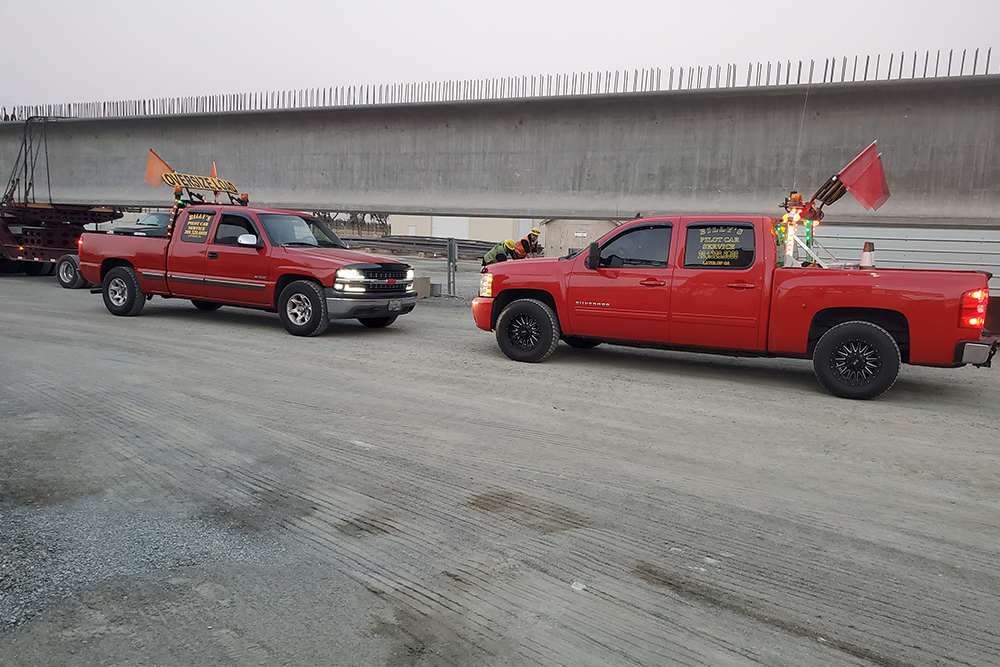Oversize loads are a common sight on highways across the United States and Canada. Transporting goods and equipment that exceed standard size limitations requires careful planning and adherence to regulations to ensure safety for all road users. One essential component of moving oversize loads is the use of pilot cars. But when exactly are pilot cars required for oversize loads in the US and Canada? Let’s delve into the regulations to understand the circumstances that necessitate the use of pilot cars.
Regulations in the United States
In the United States, each state has its own regulations regarding oversize load transportation and the use of pilot cars. However, there are some general guidelines that apply almost universally across the country:
- Width: If a load exceeds 12 feet in width, it typically requires a pilot car escort.
- Height: Loads that are over 14 feet in height often need a pilot car to ensure clearance under bridges and overpasses.
- Length: Loads that extend beyond a certain length, usually 80 feet, may require one or more pilot cars to alert other drivers of the lengthy load.
- Weight: In some states, particularly in the western region, loads that are exceptionally heavy may need a pilot car for added safety during transportation.
- Specific Routes: Certain roads, bridges, or highways may have restrictions that mandate the use of pilot cars for oversize loads, regardless of the dimensions of the load.
Regulations in Canada
In Canada, oversize load regulations are governed by individual provinces and territories, leading to some variation in requirements. However, there are commonalities in when pilot cars are necessary:
- Size Restrictions: Similar to the US, the dimensions of the load, including width, height, length, and weight, play a significant role in determining the need for pilot car escorts.
- Travel Routes: Specific highways or routes designated as oversize load corridors may necessitate the use of pilot cars to ensure safe passage through potentially challenging terrain or congested areas.
Factors Influencing the Requirement for Pilot Cars
Apart from the standard size and weight restrictions, several other factors can influence whether a pilot car is required for an oversize load:
- Traffic Conditions: High-traffic areas or busy highways may necessitate the use of pilot cars to manage traffic flow and alert other drivers of the oversized load.
- Road Conditions: Narrow or winding roads, as well as construction zones, may require the assistance of pilot cars to ensure safe navigation for the oversize load.
- Safety Considerations: In situations where the sheer size or weight of the load poses a safety risk to other motorists, the use of pilot cars becomes crucial to prevent accidents.
Ensuring Compliance and Safety
It is essential for transport companies and drivers to familiarize themselves with the oversize load regulations in each jurisdiction they operate in. Failing to comply with pilot car requirements can result in hefty fines, delays in transportation, or even accidents that jeopardize road safety.
By understanding when pilot cars are required for oversize loads in the US and Canada, drivers can proactively ensure compliance and safety throughout the transportation process.
Final Thoughts
Navigating the regulations surrounding oversize load transportation and pilot car requirements can be complex, given the variations between states and provinces. However, by staying informed, exercising caution, and prioritizing safety, transport companies can effectively transport oversize loads while minimizing risks to both themselves and other road users. Always remember that safety should be the top priority when moving oversize loads, and utilizing pilot cars when necessary is a crucial step in ensuring safe and efficient transportation.

